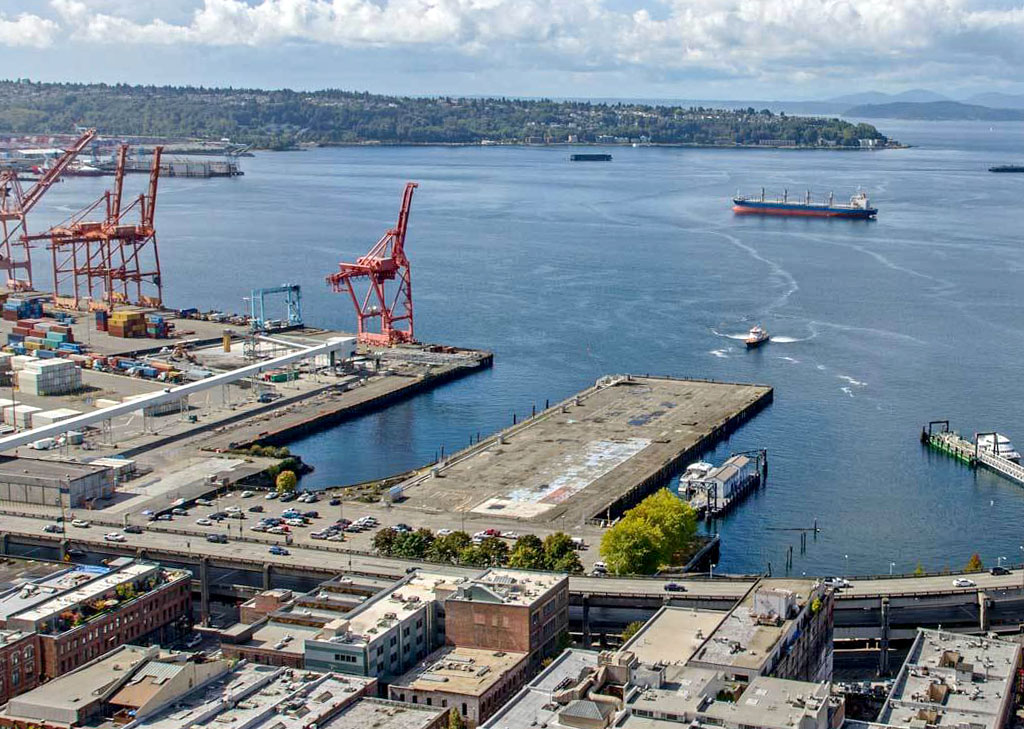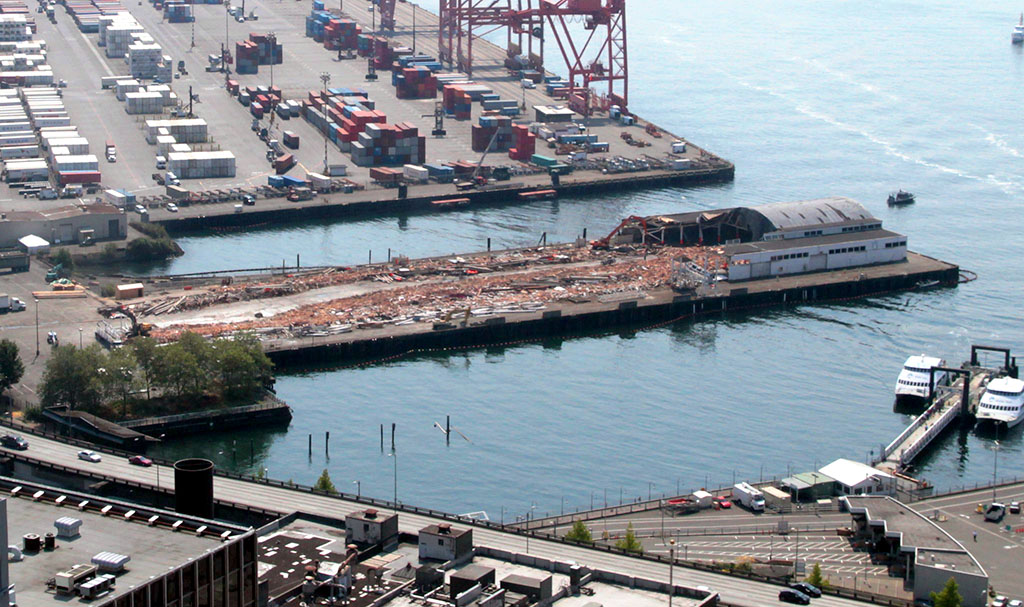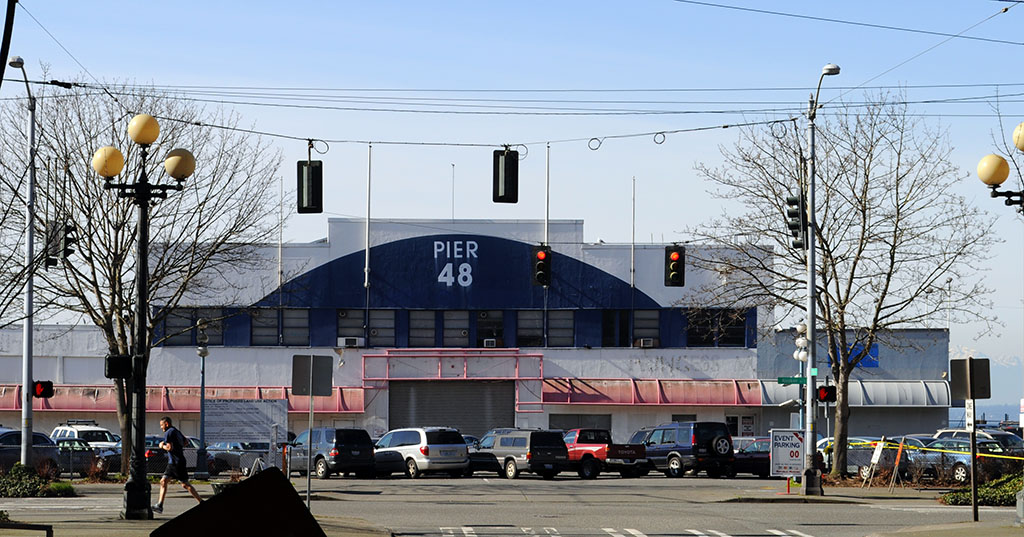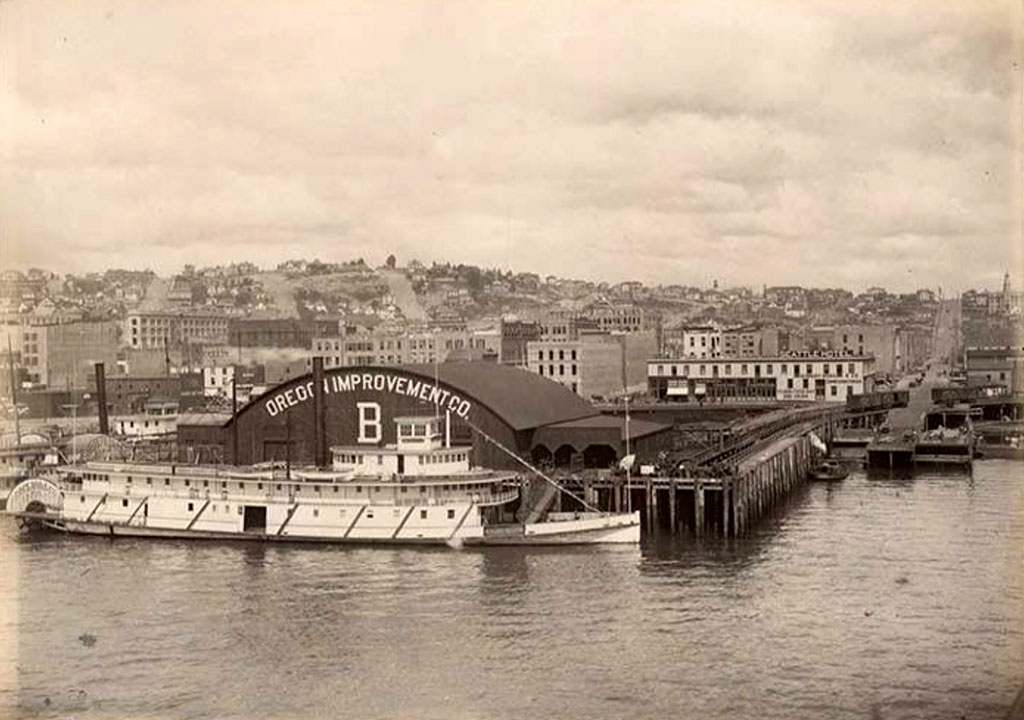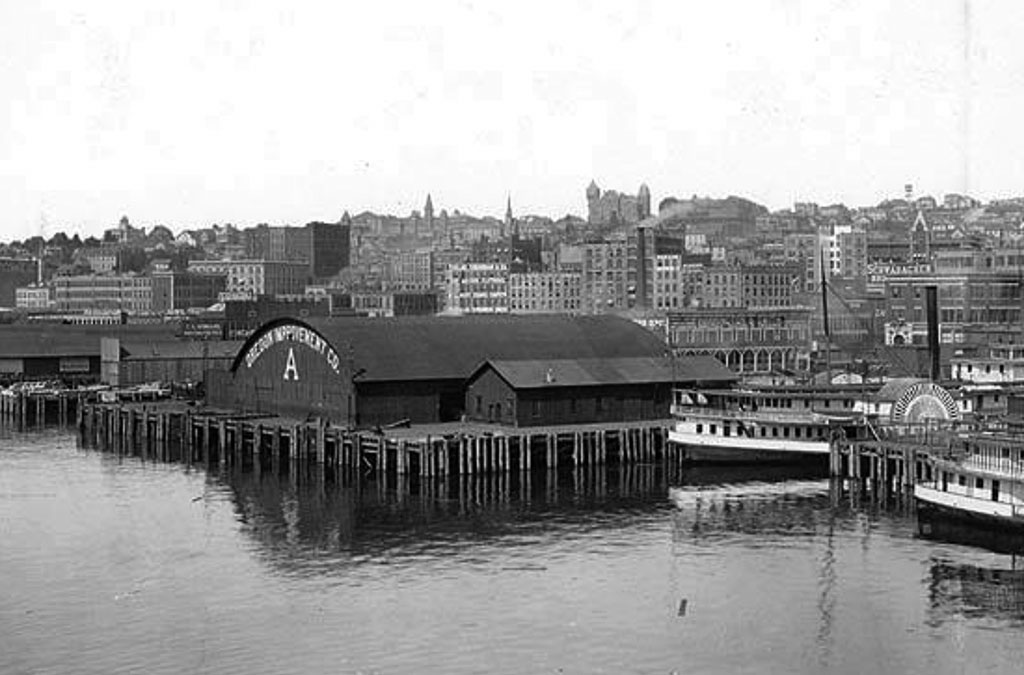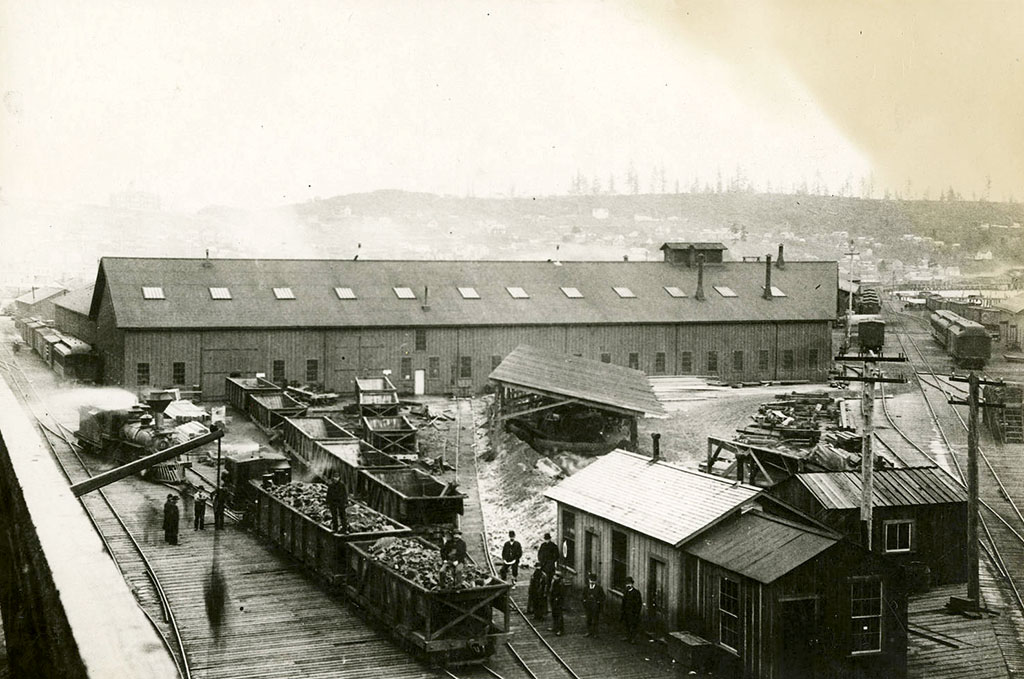-
Former location of Oregon Improvement Dock
S Main Street and Alaskan Way
S Main Street and Alaskan Way
Like many people with non-European backgrounds, Chinese immigrants in Seattle experienced persistent racism. This often led to workers being paid less than white laborers, who viewed the Chinese as unfair competitors. An initial result of this prejudice — a nationwide experience, though most profound in the western United States, where most Chinese lived — was the 1882 Chinese Exclusion Act, which restricted immigration to the United States. This law was the first of its kind, forbidding immigration based on ethnicity, in the United States. Anti-Chinese agitation continued to grow despite its passage and reached a fever pitch in 1885 when white citizens began to drive Chinese workers out of towns and communities all along the West Coast.
In Seattle, this led to labor and civic leaders pressuring the city’s Chinese on November 4, 1885, to leave the city. Within three days, 150 Chinese had fled by boat and train. With emotions still on edge, two days later the United States Secretary of War ordered the first stationing of federal troops in Seattle. More than 300 soldiers stayed in town for nine days to prevent violence against the Chinese. Three months later, simmering racism burst forth again when citizen mobs invaded Seattle’s Chinatown and forced everyone to the waterfront and the Oregon Improvement Company’s Ocean Dock (which no longer exists).
Around 200 of Seattle’s 350 remaining Chinese ended up on the Queen of the Pacific, which steamed south on February 8. Federal troops again were called out, this time to help enforce a 7 p.m. to 5 a.m. curfew and martial law. On February 23, the governor ended martial law and lifted the curfew. Most of the troops also left Seattle, leaving behind a town that had driven out most of its Chinese citizens. Passions gradually cooled in Seattle but it took 20 years for the city’s Chinese population to return to its 1885 level.
Walk north one block on Alaskan Way almost to S Washington Street and an historical marker on an anchor.
